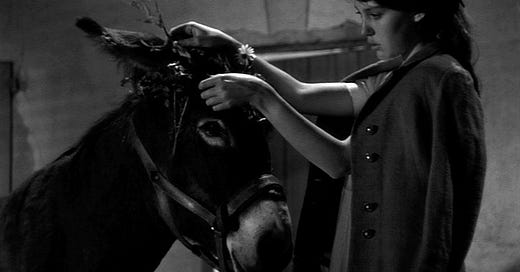Examples of good movies that are not benign are legion. (I just shared a note with a list of some of my favorite movies—I doubt if even a quarter of them qualify as benign influences.)
Examples of benign influences that are not especially good movies are less common, but still perhaps easy enough to find. Robert Bresson, for example, is a highly influential French filmmaker who enjoyed a solid reputation among critics and filmmakers, but is little more than an obscure name among ordinary moviegoers.
I watched several of Bresson’s films over the holidays. A few are enjoyable, even excellent (A Man Escaped, Pickpocket, Diary of a Country Priest, Au Hasard Balthazar); others are clunky and dull, sometimes absurd and seemingly pointless (Lancelot du Lac, The Devil, Probably, the last third of L’Argent). Bresson makes “anti-films.” But the principles he describes can still be applied to lesser degrees and be effective.
Note: Bresson distinguishes between cinema/film and cinematography, favoring the latter, and between actors and models, ditto. He argues that most cinema/film is filmed theater and so only a copy of something, whereas cinematography is its own medium, hence creative.





